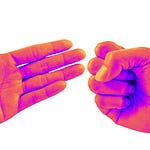Critical thinking is a critical buzzword among educators and others. I have no intention of offering a new definition of this often-abused term and defer to those who study the concept, which has long been explored in papers, at conferences, and in books. Indeed, entire organizations are devoted to understanding critical thinking, so no one needs to hear my meager musings on its meaning. Suffice it say that, from an educator’s point of view, critical thinking deserves all that attention. Students who are good critical thinkers not only excel in their education, but they also are more likely to succeed in life.
I want to differentiate critical thinking from what I call “thinking hard.” Both critical thinking and thinking hard require a degree of smarts and effort, but only critical thinking is rigorous in the truest sense of that word.
As it is, thinking hard is a major component of the proliferation of conspiracy theories on social media. Proponents of hard thinking profess to do their own research online, which unfortunately often results in getting caught in a bubble generated by the algorithms that power various apps or getting swept up in a self-affirming community. The quantity of the information and misinformation such people become exposed to is indeed challenging to process, and that difficulty mimics the more rigorous exertion of critical thinking. I am not going to get into the political aspects of the conspiracy theory world, but the impact of hard thinking on the current political divide is unmistakable.
Both critical thinking and thinking hard have clear markers. Some of these they share while others set them apart, which all-but demands depiction in a Venn diagram.
As I mentioned, an important marker of critical thinking is that it is rigorous. Merriam-Webster defines rigorous in this usage as “scrupulously accurate” or “precise.”1 I love the use of the word “scrupulously” in this definition, which itself conjures another marker of critical thinking. The critical thinker is scrupulous in the search for understanding, which is the ostensible goal of both critical thinking and thinking hard. The critical thinker is also open to ideas and evidence and does not start with a supposition that is so calcified that it resists scrutiny. In fact, the critical thinker regularly experiences self-doubt and is willing to reconsider and even abandon comfortable positions in the face of contravening evidence. Therefore, the critical thinker must maintain enough flexibility to adjust and adapt theory to fit fact. True critical thinking is rich in logic and data, even inconvenient data. Good critical thinkers, being human, make mistakes, are open to them, learn from them, and then apply that learning.
Thinking hard can be equally effortful and mimic critical thinking in terms of difficulty, but raw exertion is separate from rigor. Where the true critical thinker is scrupulous, a hard thinker is less concerned with scruples and more concerned with making a case. The hard thinker may be open at first but then becomes focused in only one narrow direction with a self-assurance that entertains few or no doubts. No adjustments of belief are possible, which means that evidence must bend to rigid theory rather than the other way round. Hard thinking is information rich, like critical thinking, which is why hard thinkers often crow about doing their own research, but it is resistant to logic and prone to fallacies.
Critical thinking is far from perfect, but it is a vital tool for getting at understanding. Hard thinking, by contrast, can be profoundly misleading and dangerous because of how it mimics critical thinking and fosters such devotion among its practitioners to its flawed conclusions. Critical thinking is not easily mastered, but it is necessary if we are to truly understand the world in which we live. Yes, it is a buzzword in education, but critical thinking deserves the buzz. 🐝
Here are a few other essays I wrote on thinking — critical and otherwise — in case you missed them.
Share your thoughts on this topic or participate in a discussion by leaving a comment below or by contacting me directly by email:
You must register with Substack to leave a comment, which stinks but is painless and free.
I look forward to hearing from you.
Post this essay on social media or send it by email to someone you want to inspire/annoy.
Subscribe to receive my weekly newsletter and special editions directly to your mailbox.
You can improve your ability to achieve your organization’s mission.
Visit my website and reach out to me to learn how.
I described the distinction between accuracy and precision in last week’s essay on communication:


















Share this post